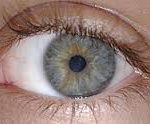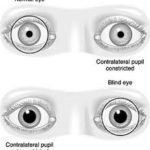
How good are your nonverbal communication skills? Michael Arhyle argues in his book, The Psychology of Interpersonal Behavior, that when people are around each other, they make eye contact with each other about 30 to 60 percent of the time.
If it exceeds this range, they are probably in love or about to fight.
So just watching people make eye contacts you can make two assumptions. Of course, there are variations with culture and religion but this truth holds largely. Let’s explore 6 other things we can learn from watching the eyes.
- Eyes Staring.

image-source-symbol-n-emotions
In their book ‘How to Read a Person Like a Book’ Nierenberg et al say that ‘usually, our eyes dart around the room, taking inventory of our surroundings; this is something we are not even aware of doing, as it happens involuntarily.
When our eyes rest on a particular object or person longer than they normally would, it indicates an interest in that person or object’. Just scanning for eyes in a room you can tell where interests lie if any.
- Eye Direction.

If a person looks up, she is probably trying to remember something or may be thinking.
If she looks down, it’s a clue that she is guilty or in submission.
If she looks to the side it is interpreted as either she is annoyed or trying to avoid conversation.
- Pupil Dilatation and Contraction.

This is completely involuntary hence we can’t manipulate it. Pupils dilate when we are attracted to something and they contract when we are angry or don’t like what we see.
You have to be close up to a person to observe the pupillary changes and also keep in mind that sudden change in lightening in the room can also cause pupillary changes.
- Blinking Rate.

Blinking is also involuntary; we can’t control it. It is important to take note of the blink rate of the person you are talking to from the beginning for this to work.
If the blink rate suddenly increases, there is a good chance the person is lying or guilty.
A slow blink rate may mean the person is super focused or conversely, not paying attention.
- Movement of the Eyelid.

Drooping eyelids (which means only little of the whites of the eyes are showing) could mean several things. It could be that the person is bored, tired or flirting.
Wide-open eyes suggest the person is paying attention and interested in what you are saying. However, if the eyes are too wide open, it’s a sign the person is afraid or surprised
- Movement of the Eyebrows.
Keep a close eye on the eyebrows as they are very expressive.

A person that raises one eyebrow is sending a deliberate message of unbelief
Two raised eyebrows are usually an expression of surprise or to show that a question is being asked.

If the eyebrows are forcefully pulled together in the middle to form a wrinkle, it’s a sign of anger, frustration or anxiety but it can also be a sign of deep concentration.